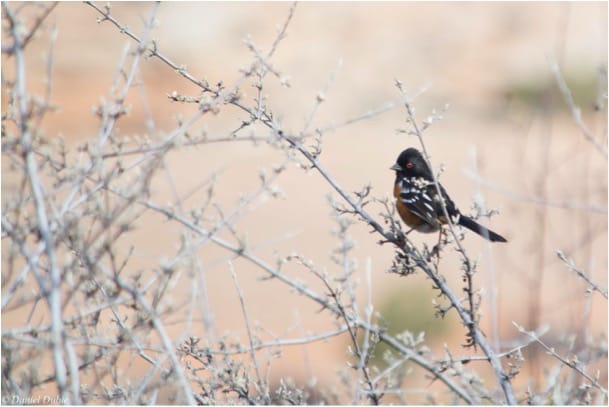
Spring Bird Migration in the Upper Skagit
Here in upper Skagit River valley – a window into the mighty mountains of the North Cascades – spring is in full swing. Along with the milder temps and the breaks in the clouds, we are also welcoming a flurry of seasonal bird species that call these mountains home for the summer. Over 50 species of migratory birds of all types breed in these mountains and use the Skagit River as their door into the high country.
As the heavy snowpack still hangs to the mountains, the valley is slowly heating up, popping leaves and early spring flowers. Though our first migrating birds have been showing up since February, it’s only been since the middle of March that the breeding migrants have really begun to show up. In the cold spring rain, came the local breeders which have spent the winter in the warm temperate Puget Sound. The song sparrow (Melospiza melodia), northern flicker( Collates auratus), spotted towhee (Pipilo maculatus) and familiar red-breasted sapsucker (Sphyrapicus rubern) showed up just as the snow was melting on the lawns and a few insects were emerging.
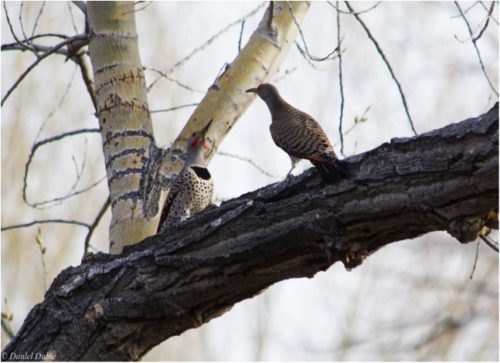
A northern flicker. Photo by Dan Dubie
Then on the first day of spring, March 20, the first swallows showed up. A flock of 15 violet green swallows (Tachycineta thalassina) welcomed spring to the upper Skagit with their acrobatic insect catching flights over Gorge Lake. These birds eat only flying insects and many times are found congregating over fields and bodies of water. That day they were a sure sign of warmer times after a long wet winter.
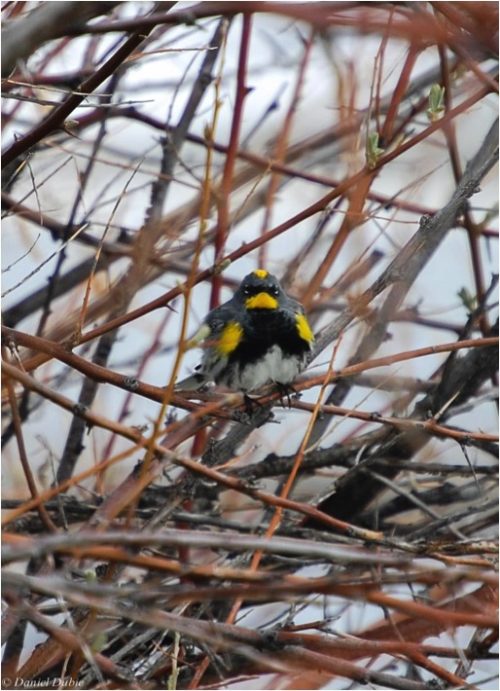
A yellow-rumped warbler. Photo by Dan Dubie
After an unseasonably wet March, April brought warmer temperatures and few more beams of sunlight. The first week of April saw our first migrating warbler species, the yellow-rumped warbler (Dendroica coronata). A very prolific species, it is the first warbler to show up in many parts of the country. It has a beautiful robust trilling song that usually teeters off at the end. Being very showy, it is seen singing in most forest habitats and is distinguished by its bright yellow, black and white plumage while having bright yellow patches on its rump.
Following this first warbler, we’ve seen many more birds show up over the last three weeks. As the flowers have started blooming and the insects hatching daily, we’ve seen large numbers of the following species:
- yellow-rumped warblers (Setophaga coronata)
- ruby-crowned kinglets (Regulus calendula)
- white-crowned sparrows (Zonotrichia leucophrys)
- tree swallows (Tachycineta bicolor)
- northern rough-winged swallows Stelgidopteryx serripennis)
- American robins (Turdus migratorius)
- song sparrows (Melospiza melodia)
- pine siskins (Spinus pinus)
- rufous hummingbirds (Selasphorusrufus)
Other species that have been seen but in smaller numbers include:
- common yellowthroat (Geothlypis trichas)
- black-throated grey warbler (Dendroica nigrescens)
- Townsend’s warbler (Dendroica townsendi)
- Nashville warbler (Vermivora ruficapilla)
- orange-crowned warbler (Vermivora celata)
- Wilson’s warbler (Wilsonia pusilla)
- Cassin’s vireo (Vireo cassinii)
- Hammond’s flycatcher (Empidonax hammondii)
- barn swallows (Hirundo rustica)
- cliff swallows (Petrochelidon pyrrhonota)
- Lincoln’s sparrow (Melospiza lincolnii)
- chipping sparrow (Spizella passerina)
- red-winged blackbird (Agelaius phoeniceus)
- western meadowlark (Sturnella neglecta)
- Townsend’s solitaire (Myadestes townsendi)
- western tanager (Piranga ludoviciana)
Out of these bird species, I want to note the types which have traveled the farthest to reside in these deep forests and valleys. Many of our breeding warblers, our one western tanager, some swallows, some flycatchers, our hummingbirds and our vireos, all make an arduous journey which encompass thousands of miles and countless barriers. Some, such as the western tanager, are so bright and colorful that they yell “jungle” and surely they have just completed their journey all the way from the rainforests of Mexico and Central and South America. Many of our warblers, some in bright yellow and green plumage, also take on a huge journey from the tropics to join us here for our warm lush summer.
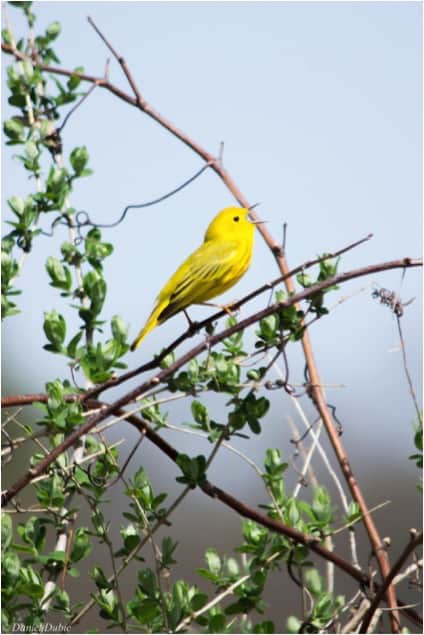
A yellow warbler. Photo by Dan Dubie
By no means is our spring migration over, it actually is now in full swing. Every day now, new species are arriving and others are increasing in numbers, waiting for the snows to slowly melt from the forests and alpine. Many of these breeding birds will take summer residence in the high mountains which are still now covered in snow. Till these places melt out, many of these species are easily seen and enjoyed at accessible places in the upper Skagit.
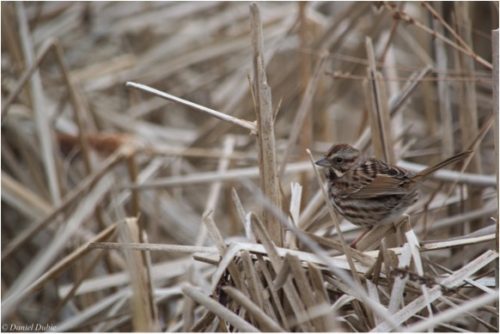
A song sparrow. Photo by Dan Dubie
The towns of Marblemount, Newhalem, and Diablo are seeing new species daily. Access locations on Diablo Lake such as the North Cascades Institute Environmental Learning Center and Thunder Arm Campground are also great birding areas. All the towns have public use areas or are in the North Cascades Park Complex and are accessible to the public.
It is still early enough in the season that many species can still be seen in flocks and are now just starting to sing. Early mornings, still air and the tropical songs of these bright colored migrants will greet you if you so choose to venture into the upper valleys of these mountains. As the snow melts and the leaves get larger, these birds will slowly melt into the summer forest, as they have for thousands of years. For just a few more weeks, you can join and welcome them home after their long journey, the same ones that their ancestors partook in generations ago.
Written by Daniel Dubie, avid birder, naturalist and graduate M.Ed. student at North Cascades Institute and Western Washington University.
Title photo of a spotted towhee. All photos courtesy of Dan Dubie


Great post! I’m looking forward to seeing the new arrivals in the mountains.
FYI: there are out of context advertising links in the text of the post. Hacked or misplaced?
BTW, I can be found several days a week at the Sedro Woolley front desk and am always happy to discuss birds! Planning on a June 1st trip to the Methow with Audubon. Please place me on any bird related mailing lists if such a thing exists.
Cheers;
Rich C.